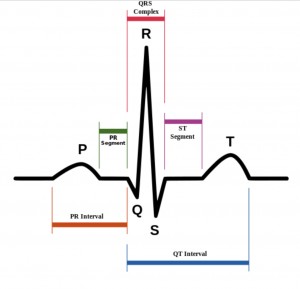a. General. Ventricular arrhythmias are the most serious arrhythmias.
The definition of arrhythmia is an abnormality in the rate, rhythm, or conduction of the heartbeat. A heartbeat irregularity may be an indication of some disease or a normal response to the body’s activity.
Arrhythmias are classified on the basis of the site of origin of the arrhythmia: SA node, atria, AV node, or ventricle.
As with some heart blocks, the QRS complex measurement is equal to or greater than 0.12 seconds. A QRS of less than 0.12 seconds indicates a supraventricular pacemaker. If the QRS is 0.12 seconds or greater, the problem could be ventricular or supra ventricular with ventricular conduction defect. All ventricular arrhythmias will have a QRS complex of 0.12 seconds or greater.

The reason that ventricular rhythms are the most serious arrhythmias is that the heart is less effective than usual and is functioning on its last level of backup support.
Four types of ventricular arrhythmias will be covered here — premature ventricular contractions, ventricular tachycardia, ventricular fibrillation, and idioventricular rhythm.
